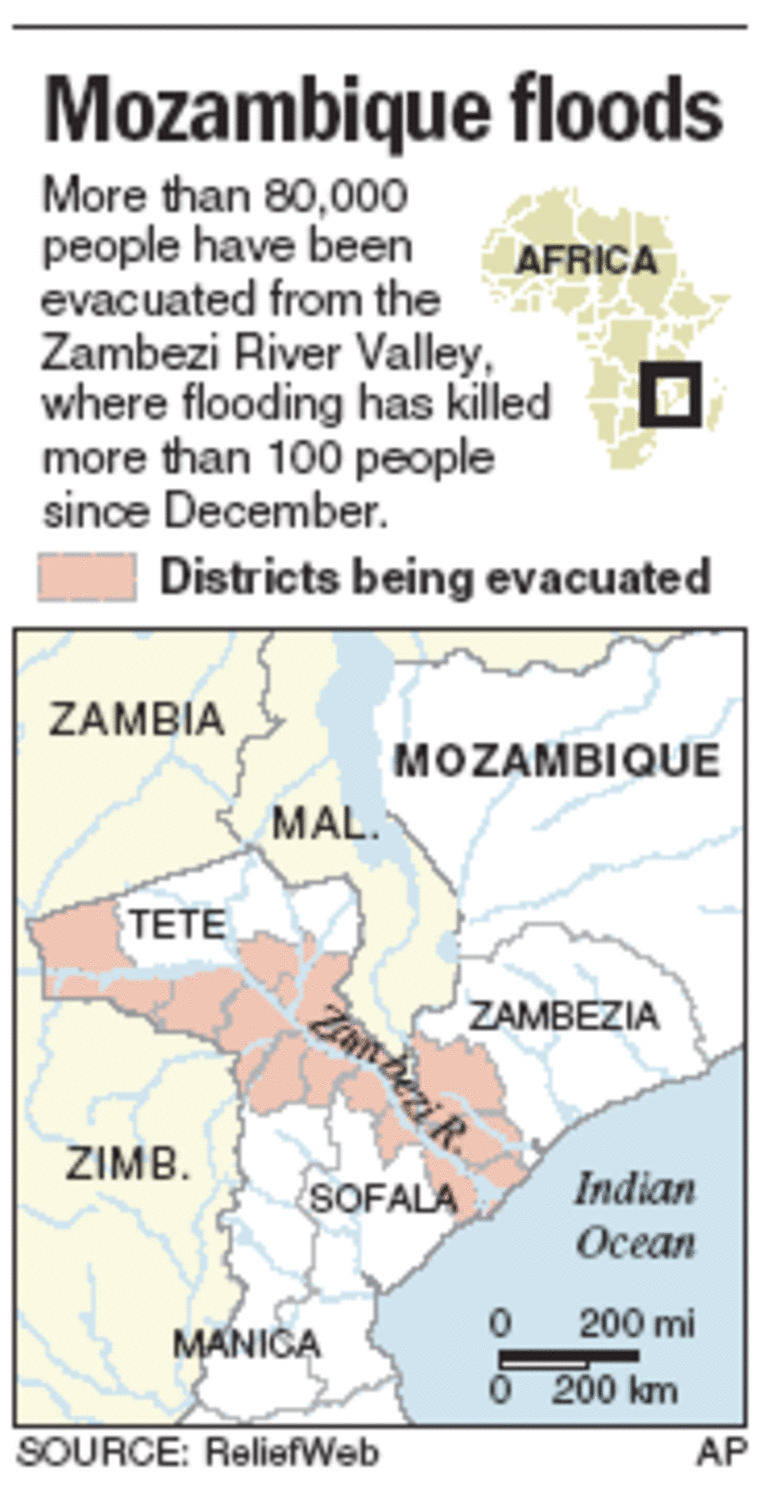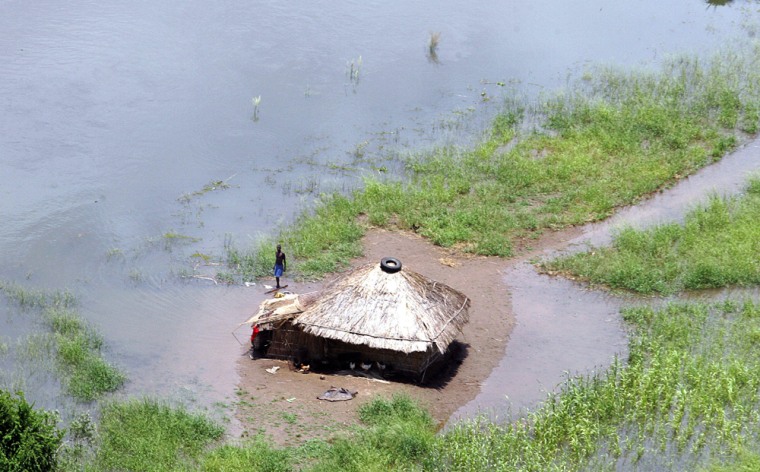In dugout canoes, motorboats and a U.N. helicopter, relief workers rescued stranded villagers from rising floodwaters of Mozambique's Zambezi River on Wednesday.
The flooding claimed another 10 lives this week, according to Mozambique state radio and TV reports, raising the national toll to 40 dead. Throughout the region, more than 100 people have died since December, when torrential rains began to swamp a swath of southern Africa from Angola on the Atlantic Ocean in the west to Mozambique along the Indian Ocean.
Adding to the urgency of rescue efforts, more rain is forecast to sweep the region and the floodgates of dams that are in danger of bursting need to be opened.
International agencies are appealing for emergency aid.
Thousands of acres of crops have been destroyed, roads have been washed out, bridges damaged and utility polls uprooted.
Despite the obvious dangers and memories of floods that killed 800 Mozambicans six years ago, some are resisting evacuation orders, even as waters submerge maize fields within sight of their huts and the only visible remains of neighbors' homes are the tops of thatched roofs peaking above newly formed lakes.
"No chickens, no goats!" a U.N. official declared firmly, relaying instructions for evacuation as the white helicopter swooped down and landed in front of the water pump on Cocorico island, where about 120 people were reported trapped by rising waters.

The island appeared deserted but for two black goats tethered to a loofah tree and a cock scratching damp earth.
Then a man came crashing through the bush, trousers rolled up and legs wet to the thigh: Felizado Markush told rescuers he managed to evacuate 117 islanders in boats despite engine trouble and shortages of fuel.
"We've been trying for two days and we finally managed to reach them this morning," said Markush, a pastor in the African Assembly of God church from Chupanga, the nearest town.
But others are refusing to leave, not wanting to abandon their homes, the maize crop that would have been harvested next month, the livestock that is their life's savings.
The U.N. official, operations chief Jaco Klopper, is exasperated. "This is the problem: people don't want to leave their goats, then the waters rise and they end up clinging to trees and we have to come and save them when we don't have the resources."
They discuss forcing those remaining to leave, but a flyover of the island shows several canoes available to save stragglers.
Officials in Mozambique already have evacuated more than 80,600 people — half of the total number under threat, according to Paulo Zucula, head of the national disaster relief agency. Most are subsistence farmers who grow maize and rice and own a few cattle or goats.
He expects the flooding to get worse than it did in 2001, when floods hit at the end of the rainy season. With six weeks and more rain to go, water levels are rising — up to 24 feet around Caia, the farming center serving as the headquarters for the relief effort and itself threatened by rising waters.
Just outside town, two boys paddle a dugout canoe through what was a maize field.
"This is going to be worse because there's going to be more water and it's going to be longer on the ground," Zucula said.
But he expected far fewer casualties because of an early warning system and preparedness set in place since the last deadly floods. "We knew in October that we were going to have problems and started on the ground in early December," he said.
Still there were shortages, and they began airlifting food on Tuesday, he said. A second airlift Wednesday was planned to Samarucha, where 5,000 displaced villagers have been in need of food and tent shelters since the main road was cut by flooding.
Many still need help, according to Luis Doluis, a 37-year-old farmer among 2,350 people living rough under plastic sheeting set over wooden poles at a camp on the outskirts of Chupanga town.
He said he, his wife and their seven children were saved by boat Friday from high ground near the submerged hut they lived in.
"But there are two other villages that the boats can't reach," he said.
